Table of Contents
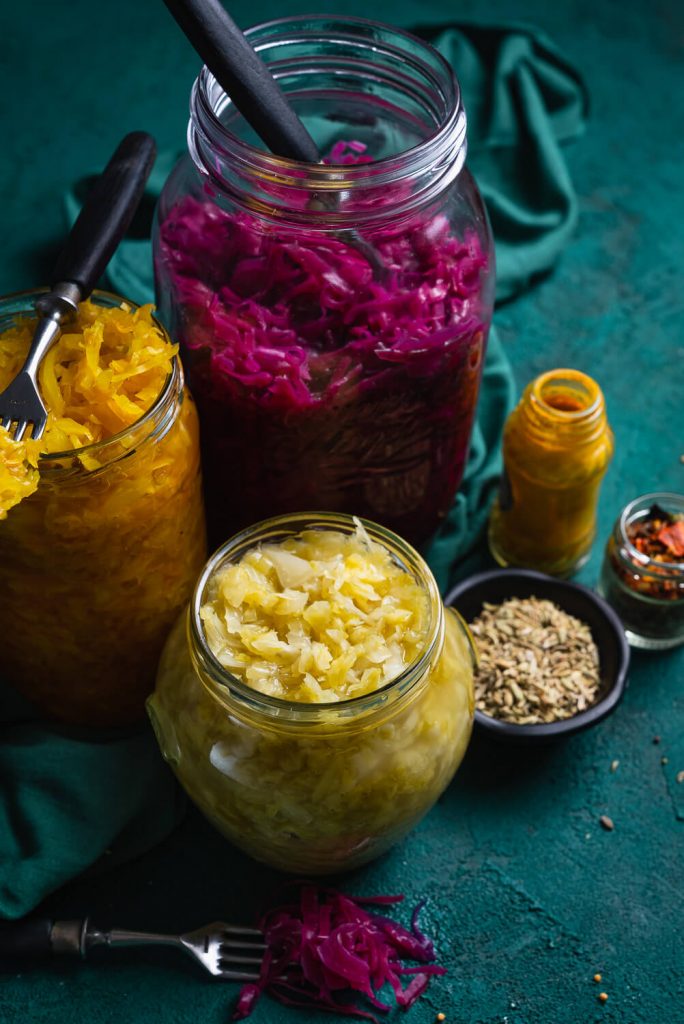
A Brief Look at The History of Fermentation
Although fermented foods gain on its importance in recent years, they have been part of human civilization for thousands of years.
If we take a deeper look into our history, we will very easily come to the conclusion that the first fermentation probably occurred by (happy) accident. Yet, over time, Babylonians started to make beer, the Egyptians learned to make bread with yeast, yogurt, and cheese, and Chinese fermented soy, tea leaves, and vegetables.
And that was only the beginning!
Scurvy, a disease caused by chronic vitamin C deficiency, which can leave people with terrible physical and psychological consequences, has had a huge impact on malnourished sailors during great geographical discoveries. But James Cook, a British explorer, and cartographer realized that more attention needed to be paid to the quality and storage of food during those long voyages. That’s why he loaded the ship with canned soups, malt, and – sauerkraut.
The result?
A far greater number of sailors returned happily to their homes.
But even though we have used it for thousands of years, all the way to Louis Pasteur and his contributions to understanding the magical world of microorganisms, people have not fully understood what exactly happens in the fermentation process. This French biologist and chemist, the man after whom pasteurization got its name, began to distinguish between two terms: aerobic and anaerobic and, thus, greatly helped us to understand what was actually going on during this process.
In the early 20th century, food fermentation was a relatively broad method of preserving food from (complete) decay, especially during the cold winter months when people did not have access to fresh fruits and vegetables. During the 1920s and 1930s refrigerators started to come in many households. That completely transformed relationship between humankind and bacteria. Today, ironically, we are in a situation in which the fear of microorganisms has become ridiculously unbearable. From excessive use of antibiotics for a whole array of health issues, frantic scrubbing of all surfaces in the house with aggressive detergents to industrial food production in which, food is preserved in a reverse process: destroying as many microorganisms as possible.
While writing this text, I remembered my biology teacher, who used to say to us: “Remember kids, bacteria will have the last word.”
I would like that, instead of being afraid of microorganisms, we relearn to coexist with them again, instead of being afraid of them. Otherwise, we could easily become their victims. Changing this relationship through food is one of the first steps we can take in this process.
The homemade sauerkraut recipe is really just one tiny step towards a better understanding of these little creatures and a big step towards more exciting and less predictable food that can be beneficial for our health in many, many ways. After more than 2 years of making my own kefir milk and making my own rye sourdough starter, I decided to learn as much as I can about lacto-fermentation and share with you everything I learn during this process.
So, if I manage to pass on at least one part of this enthusiasm to you, I will be extremely happy!
Let’s get to know the basic concepts first.
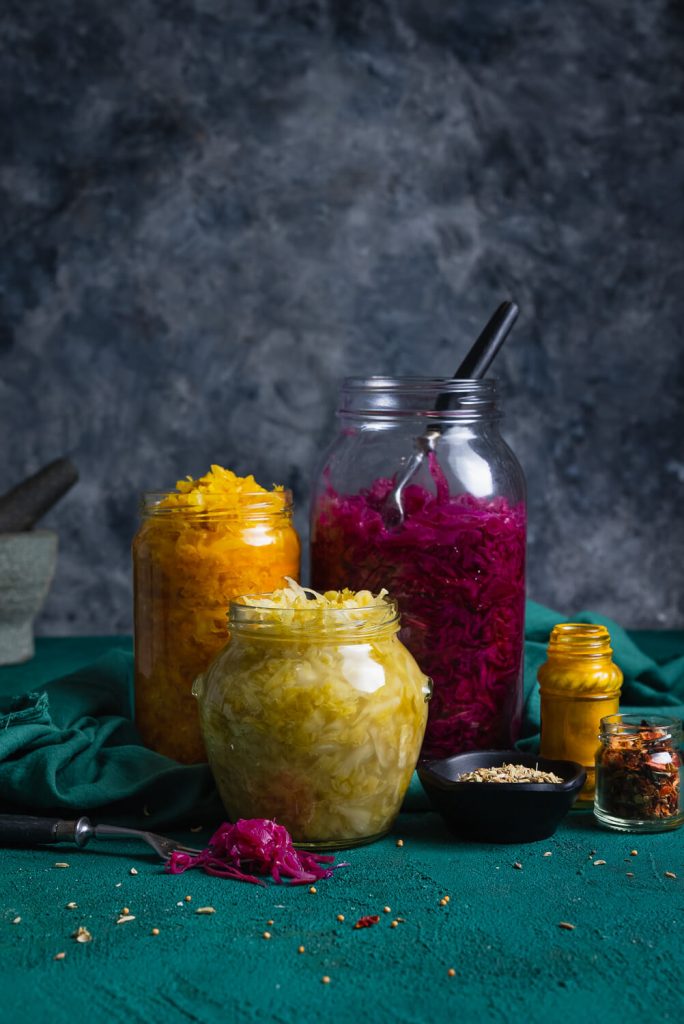
What is Food Fermentation
Simply put, food fermentation is a process in which microorganisms, such as bacteria and yeast, under anaerobic conditions, feed on carbohydrates from food. As a result of this decomposition, alcohol, acids, vitamins, and other by-products are formed, which completely changes the taste of our food and its properties.
People have been using fermentation for centuries. There isn’t probably a single person who hasn’t encountered fermented food and drinks in some part of their lives. Some of the most known food that was created by the fermentation process are:
- yogurt and kefir
- different types of cheese
- beer
- wine
- vinegar
- sourdough bread
- soy products (soy sauce, tempeh, gochujang, tamari..)
- preserved vegetables (pickles, sauerkraut, kimchi…)
3 Different Types of Fermentation
There are 3 main types of fermentation: alcohol fermentation, acetic acid fermentation, and lactic acid fermentation. For the homemade sauerkraut recipe and other vegetables, we need to know the basics of lacto-fermentation, so my focus here will be on it.
Why Make Your Own Sauerkraut
During reading this post, at some moment you maybe started to think: “Why would anyone nowadays make sauerkraut at home when it can easily be bought at the store?”
My motivation for this endeavor was twofold:
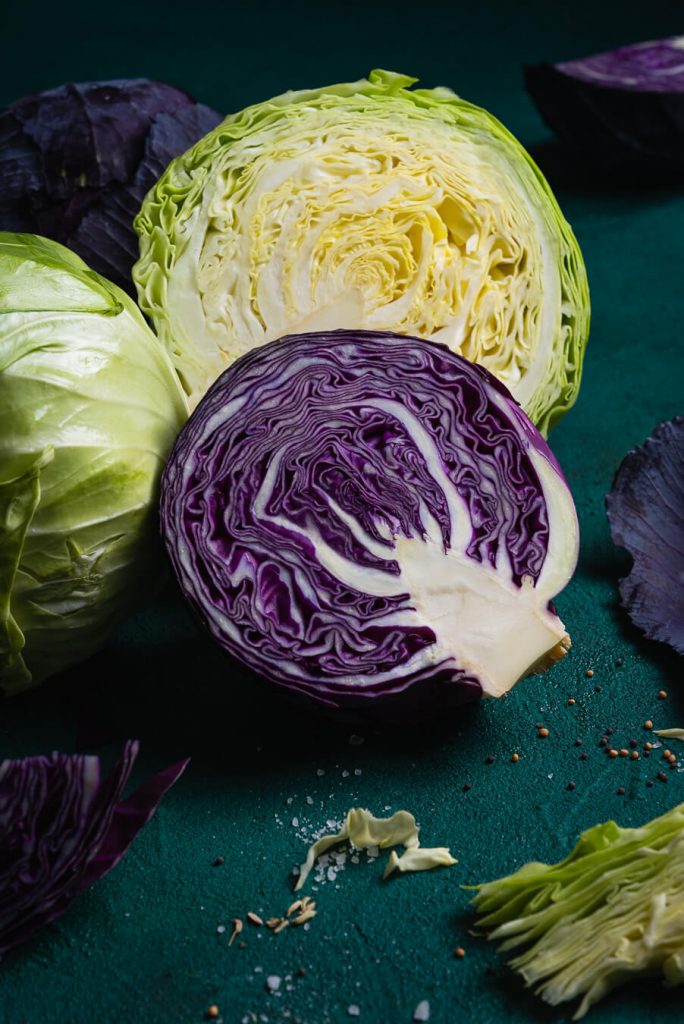
- I can season my sauerkraut just the way I want it – I don’t know what is the situation in your country, but in Croatia, in stores, we can buy only sauerkraut seasoned with salt, most of the time. With so many spices and other opportunities for even better flavor, it would be really a shame not to experiment. That’s why I decided to try some new flavor combinations. Also, I find store-bought sauerkraut to be too sour for my taste.
- Learning about the fermentation of food and preserving excess vegetables – preparing veggies and observing what will happen in these wonderful jars, for me, is an amazing experience! For example, sauerkraut won’t have the same taste on the 7th and on the 14th day of fermentation. Moreover, it is more likely that the taste will change completely. I don’t know about you, but this is absolutely fascinating to me. Also, because I constantly try different recipes, I often find myself in a situation where I don’t have enough time to use up all veggies before they spoil. I hate throwing away food and lacto-fermentation is a great way to prolong its life.
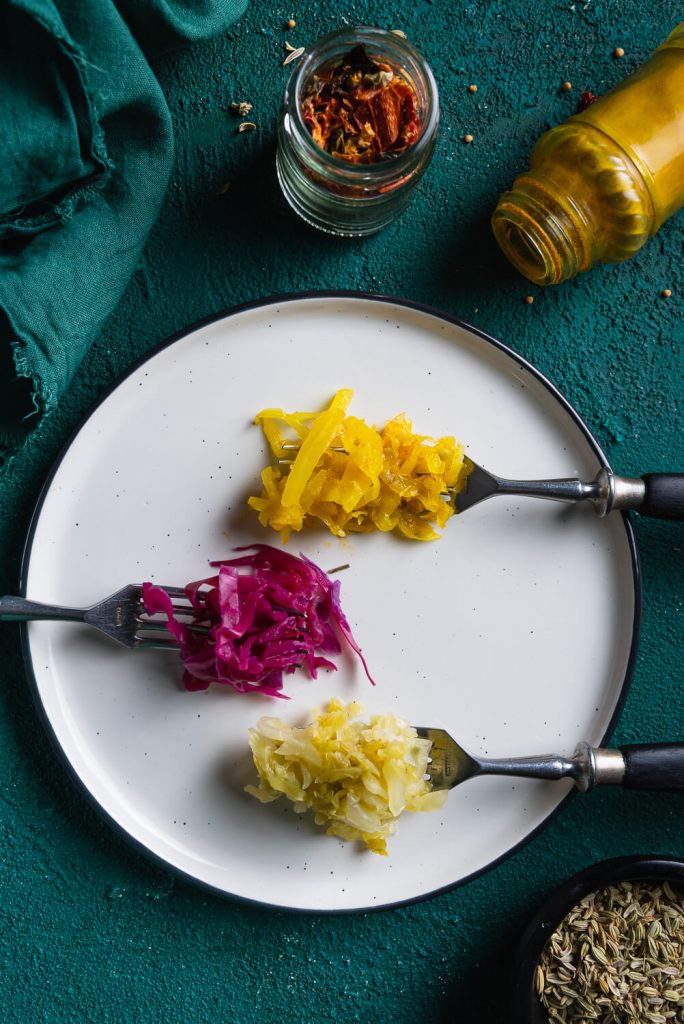
How Does Lacto-Fermentation Work
Lacto-fermentation of food is a process in which the Lactobacillus bacteria convert naturally occurring carbohydrates from food (in this case vegetables), into lactic acid.
During this process, carbon dioxide is also released, especially in those first few days of fermenting. In this process, Lactobacillus can be considered as “good bacteria”, which, if we provide them with desirable conditions, will sweep away those “bad bacteria” and make our food very tasty and funky.
What you need to pay attention to is that these types of bacteria can only survive in an anaerobic environment (an environment without the presence of oxygen). That’s why you need to pay special attention that your cabbage stays under the brine the whole time during the process of fermentation. Otherwise, various molds, fungi, and other bacteria that we consider undesirable for us can develop. This will spoil the cabbage and we will not be able to consume it.
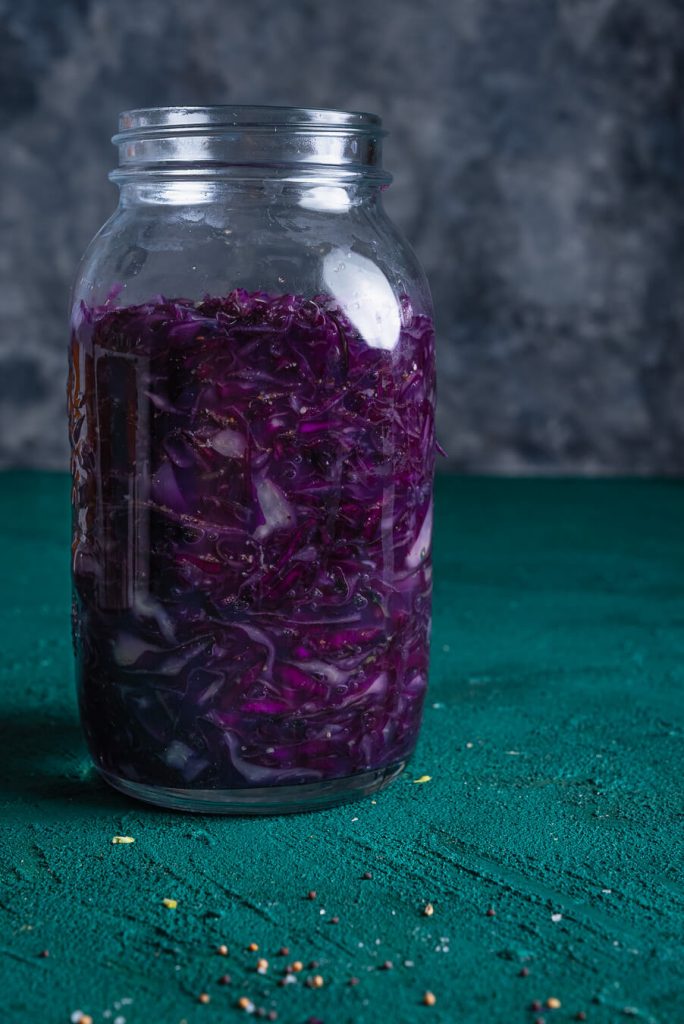
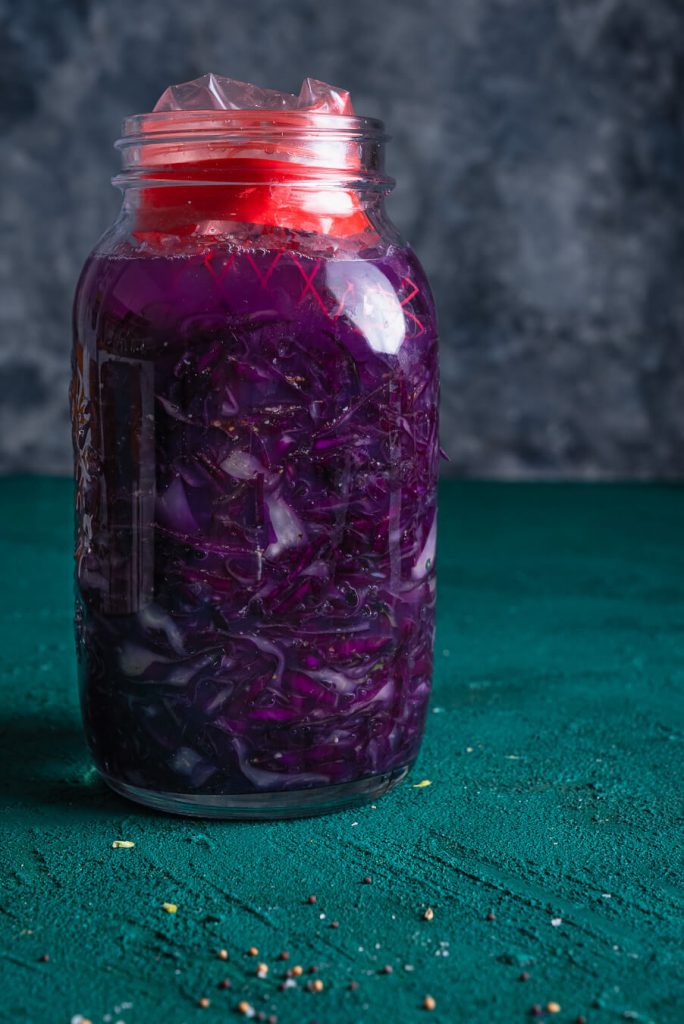
Wait a Minute, Can Salt Harm Good Bacteria?
It won’t, as a matter of fact, in the initial stage of fermentation, the salt will prevent the development of unwanted bacteria so that Lactobacillus can do their job. Salt also helps our vegetables to stay crispy, along with spices it develops flavor and controls the speed of fermentation, which is especially important during the warmer times of the year.
You may be wondering which salt is best to use for lacto-fermentation?
Someone says you should use Himalayan, not table salt, and someone that you should use sea salt. The authors of the great book “The Art of Fermentation” Sandor Ellix Katz and Michael Pollan say that it doesn’t really matter what salt you use. I use sea salt most of the time in my cooking, so I used it in this recipe as well.
What Do you Need For Lacto-Fermentation
- Vegetables – With the process of lacto-fermentation we can preserve almost any veggies that come to our mind. Since I decided to make homemade sauerkraut, I bought two cabbage varieties: green and red cabbage. You can use any type of cabbage you prefer. And you don’t need to stop there; add shredded carrots, parsley, celery root, or even beetroot.
- Salt – I prefer to use fine sea salt.
- Clean jars – Wash them thoroughly with hot water and detergent. If you want, you can also sterilize them at 100°C (212°F).
- Weights – The key to successful lacto-fermentation is to ensure that the vegetables remain submerged in water and salt. This can be done in different ways – you can put a few extra cabbage leaves and press them with a clean rock or you can use store-bought weights. I like to use clean plastic zip bags (make sure they don’t leak) filled with tap water – they do their job pretty good!
- Time – waiting is definitely the hardest part. After a few days, the cabbage will already start to change its appearance and taste. Expect a lot of CO2 in the first week. Keep your jars with veggies on the surface that can easily be cleaned. If you don’t like very sour sauerkraut, you can consume it after a few days. However, I recommend you to be patient and wait at least 10-14 days, or preferably longer, in order for the flavors to further develop and deepen.
- Vessels – traditionally, vegetables were most often fermented in clay vessels. Some people use plastic today, but for such a small amount of sauerkraut, glass jars proved to be the most practical solution for me. The wider the opening of the jar, the better. While you wait for the Lactobacillus to do their job, you don’t need to close the jar hermetically with a lid. Also, always leave at least 6-7 cm to the top of the jar to get room for your weights.
Ideal Temperature For Lacto-Fermentation
The length of fermentation will also depend a lot on the room temperature. During the summer, it will certainly take less time for veggies to ferment in comparison to the cold, winter months. Generally, the best temperature for lacto-fermentation is between 16 and 24°C (60 – 75F).
In this post, I will show you 3 varieties of homemade sauerkraut that I made. In the images below you can see what cabbage looked like on the 1st and on the 14th day of fermentation.
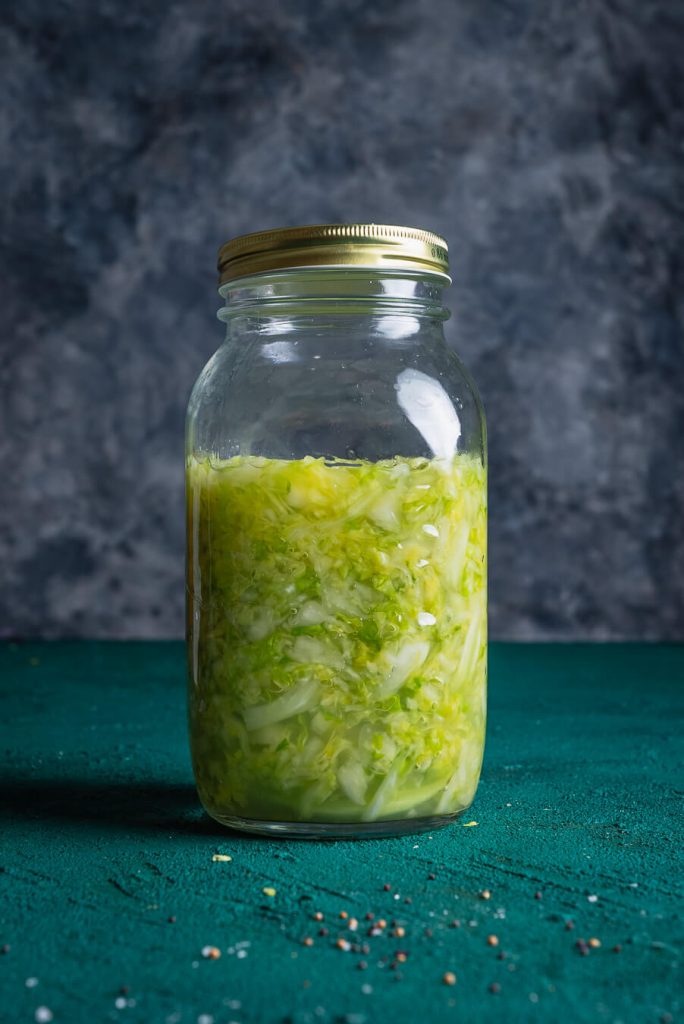
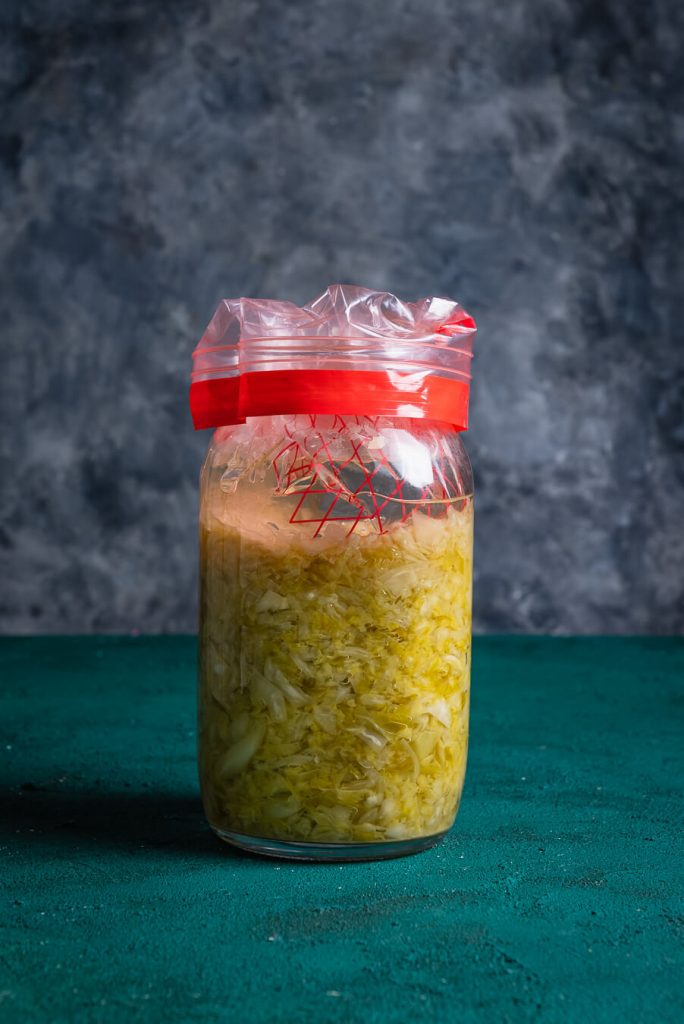
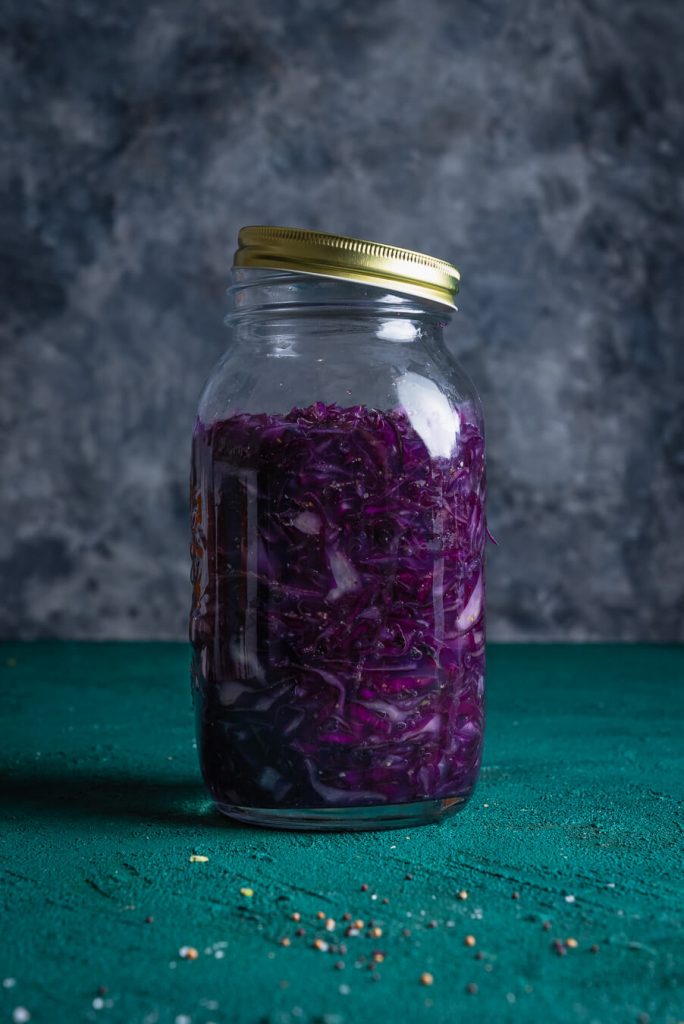
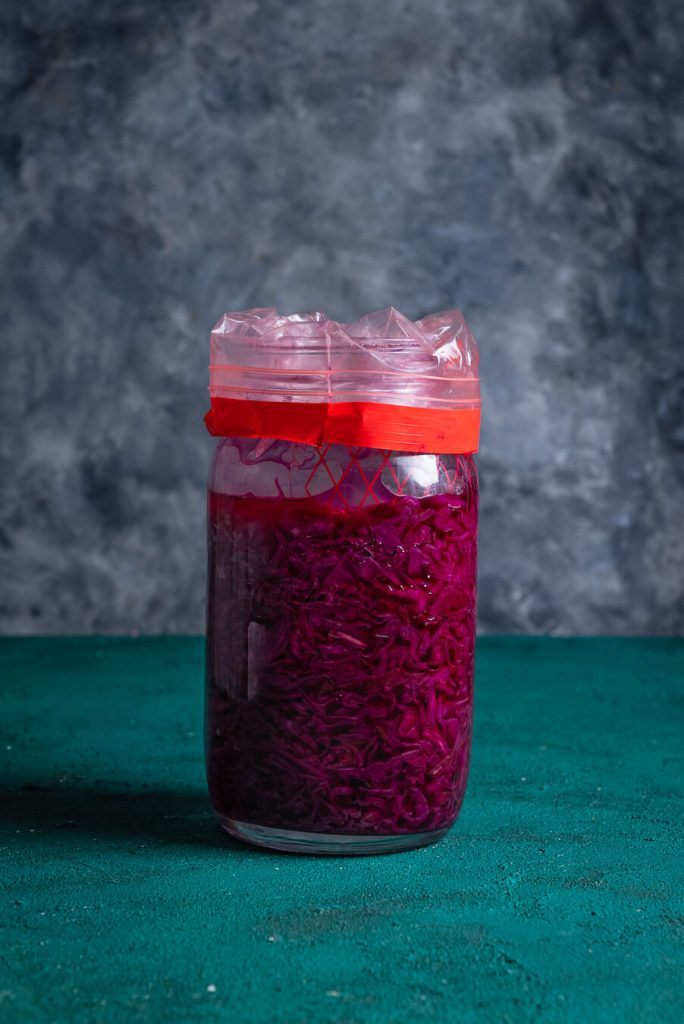
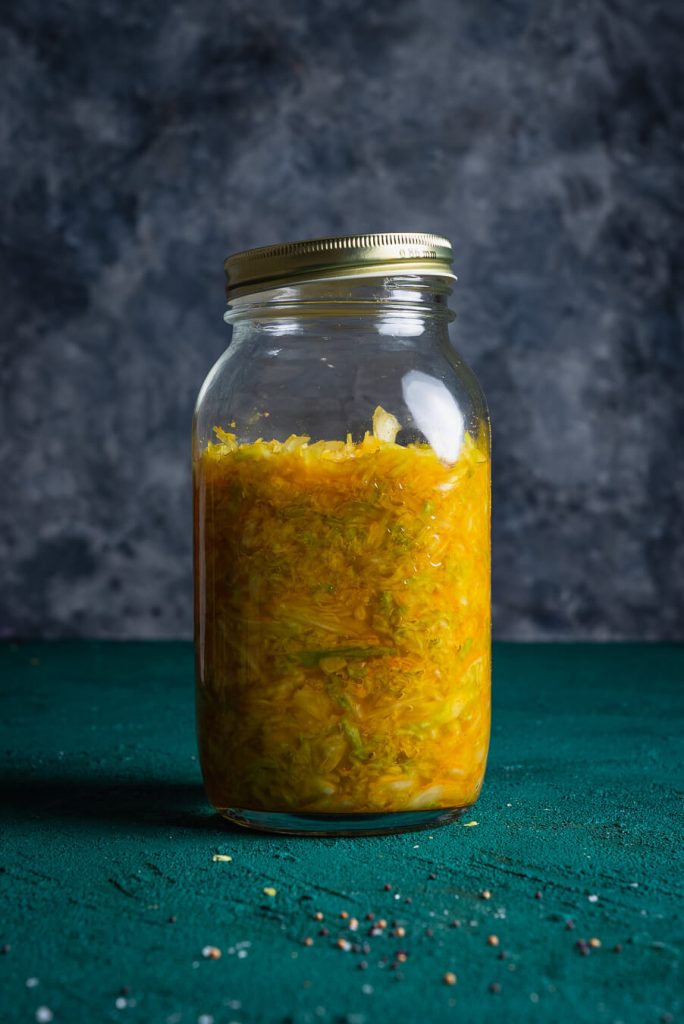
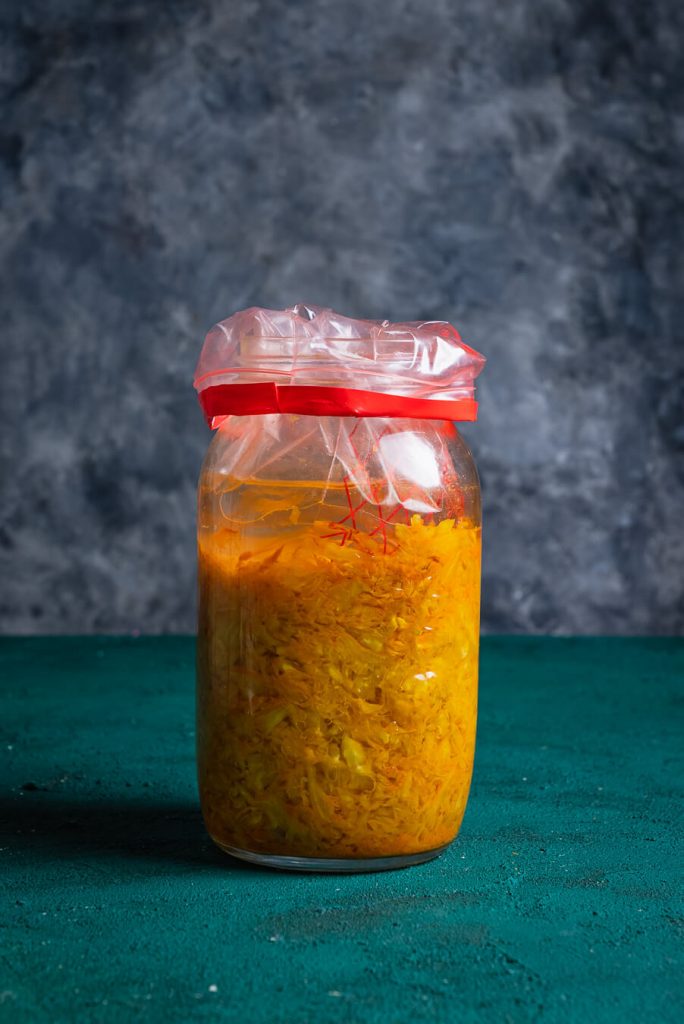
7 Sauerkraut Recipe Ideas
Although I like to eat sauerkraut mostly during fall and winter instead of salad made from fresh veggies, it can easily become a part of a whole new dish or serve us as a great side dish! As our body looks for different kinds of foods during the cold months, you cannot go wrong with combining homemade sauerkraut with cured meat, different types of sausages, or bacon.
For example, I bought some delicious sausages in the local butcher shop and combined them with red sauerkraut, ajvar, and pickles in hot dog buns, and boy, what a great treat that was!

Here are some ideas for using sauerkraut in different recipes:
- Sauteed sauerkraut (my family’s favorite)
- Istrian jota
- Potato and sauerkraut casserole
- Grilled cheese and sauerkraut sandwich
- Warm turkey salad
- Ukrainian sauerkraut soup (kapustnyak)
More recipes for preserves to try:
- OVEN-ROASTED PLUM JAM (NO ADDED SUGAR)
- NO PECTIN FRESH APRICOT JAM
- HOMEMADE KETCHUP FROM FRESH TOMATOES
If you try any of these homemade sauerkraut recipes, be sure to tag me on Instagram or send me photos of it! If you have any questions, feel free to pop in my DMs on social media or send me an e-mail! For more video recipes, be sure to subscribe to my Youtube channel.
Cook with love,

Sources:
https://www.irishtimes.com/life-and-style/the-great-big-fridge-debate-1.1152534
https://nova-akropola.com/kulture-i-civilizacije/tragom-proslosti/james-cook/
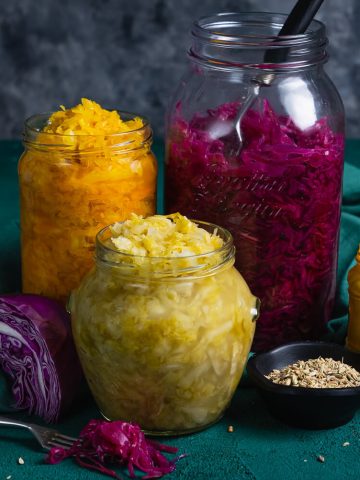
Homemade Sauerkraut Recipe – 3 Ways
Ingredients
Basic sauerkraut
- 1 kg green cabbage (finely grated and chopped)
- 25 g sea salt
Hot & spicy sauerkraut
- 1 kg green cabbage (finely grated and chopped)
- 25 g sea salt
- 1 teaspoon turmeric powder
- ½ teaspoon hot paprika powder
- ½ teaspoon ginger powder
- ½ teaspoon fennel seed powder
Funky red cabbage sauerkraut
- 1 kg red cabbage (finely grated and chopped)
- 25 g sea salt
- 1 clove garlic (minced)
- ½ teaspoon ground black pepper
- ½ žličice ground coriander seeds
- ½ žličice ground mustard seeds
Instructions
- Remove the damaged, outer leaves of the cabbage, wash the cabbage head and drain from water. Cut it into quarters, then finely grate (I recommend using a mandolin).
- Transfer the shredded cabbage to a large bowl, add salt, and start massaging the cabbage with your hands to let it release as much water as possible.
- After 10 min, the cabbage should have already released a lot of water, softened and shrunken in size a lot. If you are making one of the versions with spices, now you can add your spices and massage it for an additional 2-3 minutes. Transfer the sauerkraut mixture to clean, dry jars so that you leave at least 6-7 cm to the opening. Add the rest of the brine so that all cabbage is covered in it.
- Take a clean plastic bag (I'm using a zip bag) prefilled with some tap water and carefully place it as a weight in a jar. All cabbage needs to be immersed in the brine. It's not necessary to close the jar with a lid.
- Leave it in a darker place, at a temperature between 16-24 Celsius (60-75 Fahrenheit). Every once in a while check how the fermentation is making a progress. Sauerkraut is ready for consumption when you're happy with how it tastes.
- Transfer the sauerkraut to the fridge to slow down the fermentation.
Notes
- Depending on the type of cabbage, the time of the year when it was harvested, and its freshness, there is a possibility that during the massaging of cabbage with salt it maybe won’t release enough liquid. It rarely happened to me, but it is possible. Don’t worry about it: you can dissolve some salt in additional water and then add it to a jar. However, it’s important to maintain a good ratio of salt and water. Follow this formula: (water in grams) x 2.5/100. For example, if you need 200 g of water, multiply 200 by 2.5 and divide by 100 and the result will be 5 g.
- Make a note of the date when fermentation started. The easiest way to do this is to write it on a sticker and put it on the jars.
Nutritional information provided is an estimate based on ingredients data and should be used for informational purposes only. Actual nutritional content may vary based on factors such as portion size, preparation methods and ingredients used.
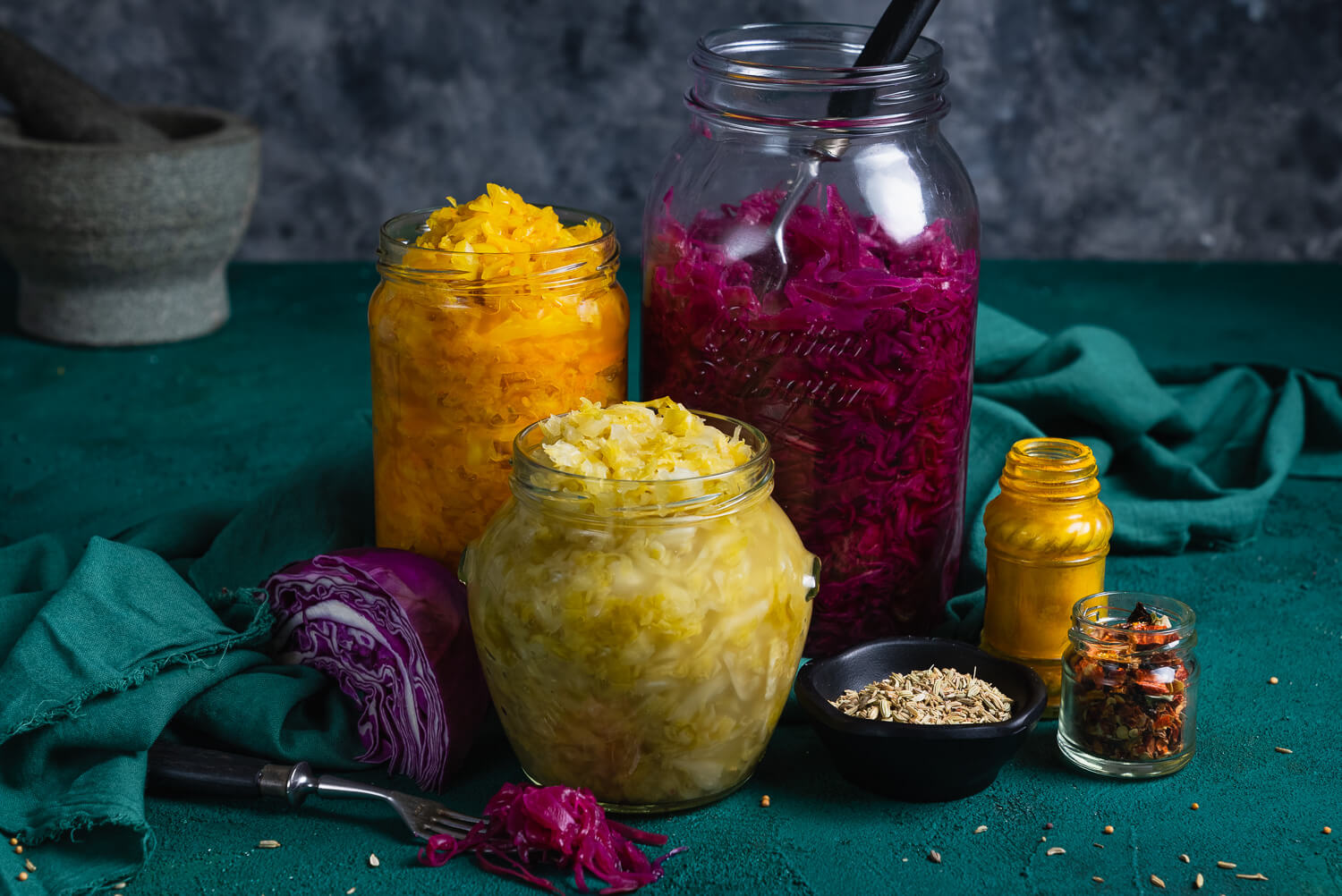
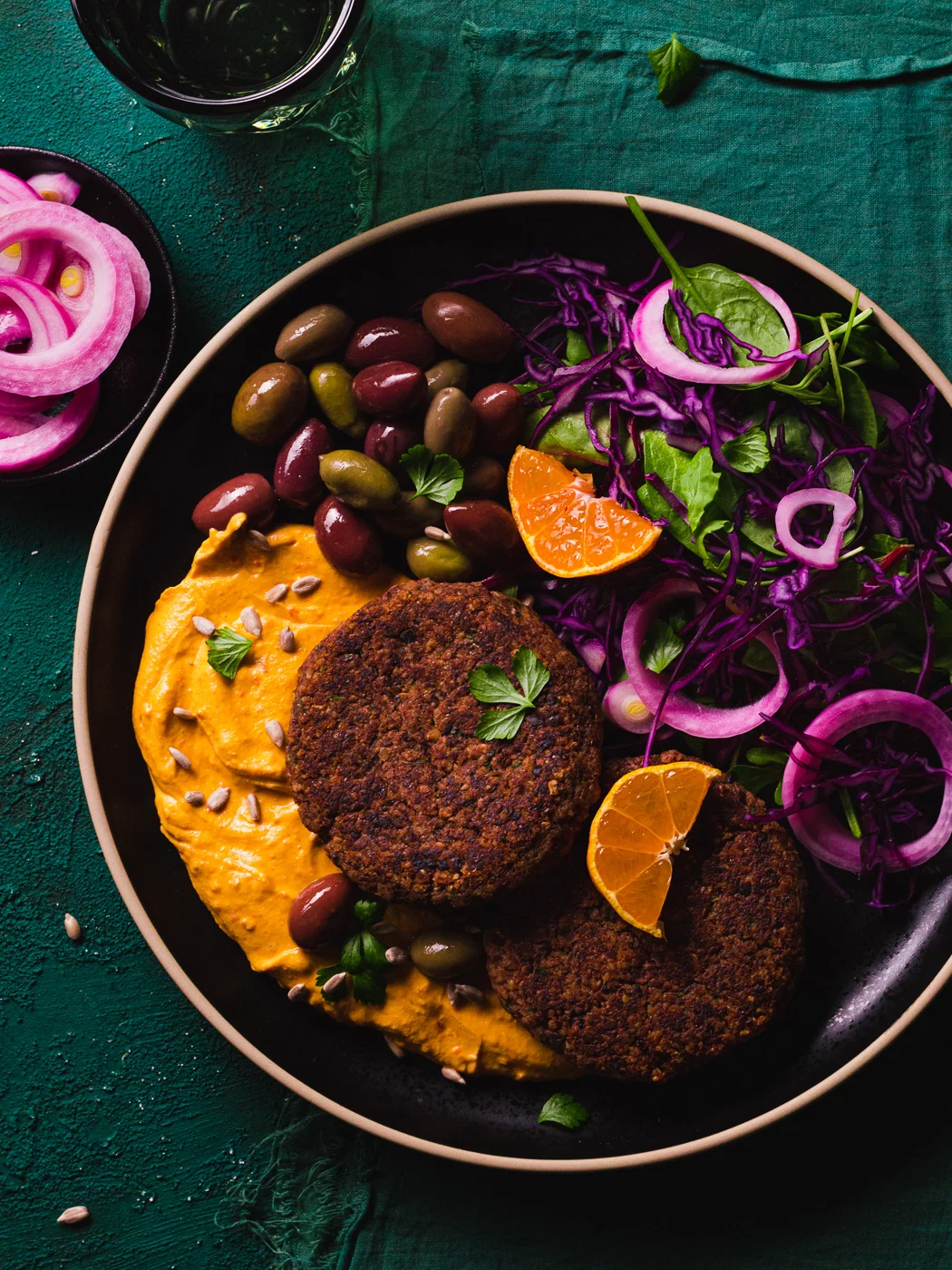




Leave a Reply